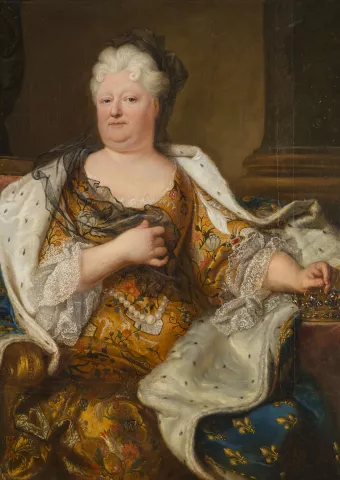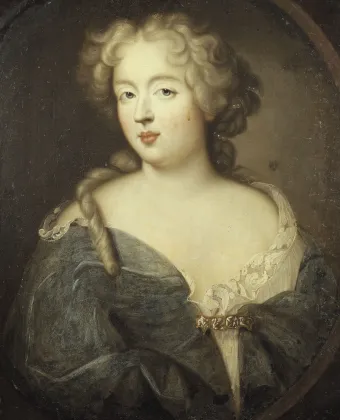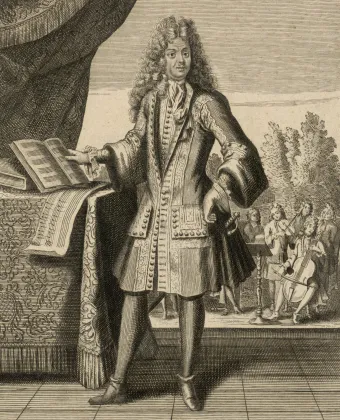Elizabeth-Charlotte of Bavaria, often referred to as “Liselotte” or “La Palatine”, was a German princess of Protestant upbringing. In 1671 she married Monsieur, the King’s brother, and was obliged to convert to Catholicism. She took up residence in the Court and became an astute observer of goings-on at the palace.
An avid letter-writer, her correspondence covers the great events of the day as well as the more mundane aspects of life at court. From her desk in the Palais-Royal the Château de Saint-Cloud or the Palace of Versailles, she brought her famously sharp nib to bear on the main characters in the continual drama that was life in the court.
She was a particularly fierce critic of Madame de Maintenon, whom she called the “king’s whore,” but displayed a faithful admiration, even love, for Louis XIV.
Her letters, closely scrutinised by Superintendent of Post M. de Torcy, spread a less than flattering image of the royal court throughout Europe.
Between 1674 and 1676, despite her husband’s acknowledged preference for male company, she gave birth to three children. One, Philippe II, Duke of Orléans, would serve as regent for Louis XV.
Her correspondence in French and German, of which only a tiny part survives, is widely considered to be among the best contemporary accounts of the Grand Siècle. She died at Saint-Cloud in December 1722.















